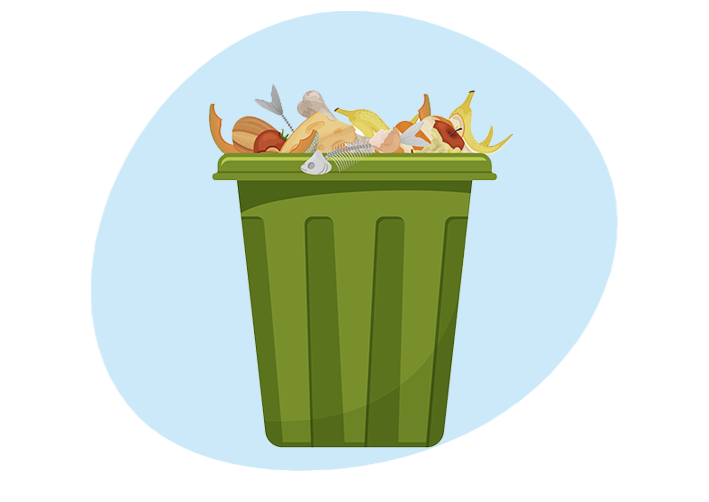Back Yard Pile Composting

- Find a sunny spot on your property within reach of your garden hose.
- Design your compost pile to compliment your yard or garden.
Follow the Back Yard Composting Recipe ~
- ONLY add fruits, veggies, coffee grounds, egg shells, breads, pasta, nuts and rice from the kitchen. (greens) Chop all items into small pieces for quicker decomposition.
- NEVER add meats, bones, fish, dairy, cooking oils, pet waste or cat litter.
- Gather leaves, grass clippings, stalks, straw/hay, paper, wood chips or sawdust (browns) and store in your compost area.
- Add to your kitchen “greens” to the compost area, layer with the “brown” materials previously collected.
- Occasionally water, stir or flip the materials.
- Winter compostingOnly add kitchen scraps during the winter…NO carbon materials. Begin remixing your materials when it begins to thaw in the spring.
- Your compost area will decompose at different rates throughout the year. Gather the black decomposed soil amendment from the bottom of compost area. It can be sprinkled directly over your lawn or around trees for fertilizer and a moisture enriching supplement. It can be mixed with existing garden soil or potting soil at a 1-part compost to 2- parts soil ratio.
If the Back Yard Composting Recipe is followed correctly, there will be little or no smell from your compost area. If there is an odor, it is an earthy forest floor type of smell. If any items from the avoid list are added you may have odors or attract rodents.
Trench Composting
Dig and Drop
Trench composting is great because it puts your food scraps directly into the ground! This method eliminates the need for sun and water, for flipping or stirring, and there is no hassle of building or maintaining a back yard compost area.
- Trenches can be made in your garden, surrounding bushes or trees, along a farm field, or where ever you have diggable soil.
- Using the same Back Yard Composting Recipe, gather and chop your kitchen scraps.
- Dig the trench or hole approximately 12 inches deep and wide enough for your collected materials.
- Empty your kitchen scraps (greens) and add some leaves, grass, paper, straw or hay, (browns) and cover it all back up with dirt.
- Garden trenches can be moved and rotated each year. Begin your trench row on the outside of the garden, and move it across the garden each subsequent year.
- The Side Dress Method an be used around existing trees, plants or bushes. Dig your hole, trench or circle several inches beyond the roots of the plant or tree. Bury your compostable materials mixture and recover.
- Rototill your trench row in the spring and spread the enriched soil through out the garden bed.
For further information on trench composting, visit the Farmers Almanac Online!
https://www.farmersalmanac.com/what-trench-composting-123957
